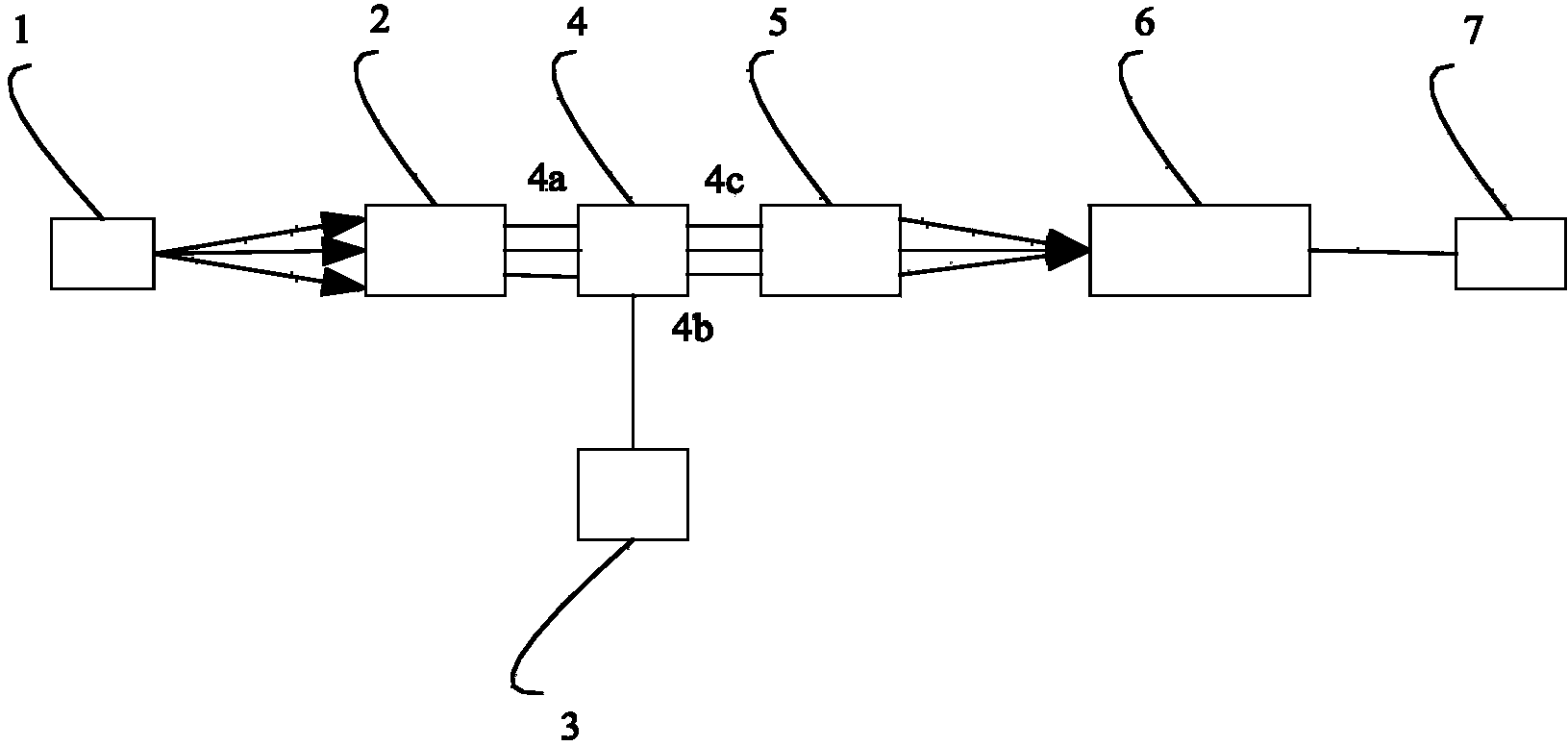Optical correlator based on modal dispersion
An optical correlator and modal dispersion technology, which is applied in the field of optical correlators, can solve the problems of expensive equipment, poor signal-to-noise ratio at the output end of the system, and narrow bandwidth of laser light sources, so as to save costs, overcome selection difficulties, and reduce energy consumption. Effect
- Summary
- Abstract
- Description
- Claims
- Application Information
AI Technical Summary
Problems solved by technology
Method used
Image
Examples
Embodiment Construction
[0016] The following will clearly and completely describe the technical solutions in the embodiments of the present invention with reference to the accompanying drawings in the embodiments of the present invention. Obviously, the described embodiments are only some, not all, embodiments of the present invention. Based on the embodiments of the present invention, all other embodiments obtained by persons of ordinary skill in the art without making creative efforts belong to the protection scope of the present invention.
[0017] The present invention will be further described below in conjunction with the accompanying drawings and embodiments.
[0018] figure 1 The shown optical correlator based on modal dispersion includes: a light source 1, a first converging lens 2, a signal source 3, a spatial light modulator 4, a second converging lens 5, a multimode optical fiber 6 and a photodetector 7, wherein the light source 1 is located at the focus position of the first converging ...
PUM
 Login to View More
Login to View More Abstract
Description
Claims
Application Information
 Login to View More
Login to View More - R&D
- Intellectual Property
- Life Sciences
- Materials
- Tech Scout
- Unparalleled Data Quality
- Higher Quality Content
- 60% Fewer Hallucinations
Browse by: Latest US Patents, China's latest patents, Technical Efficacy Thesaurus, Application Domain, Technology Topic, Popular Technical Reports.
© 2025 PatSnap. All rights reserved.Legal|Privacy policy|Modern Slavery Act Transparency Statement|Sitemap|About US| Contact US: help@patsnap.com



